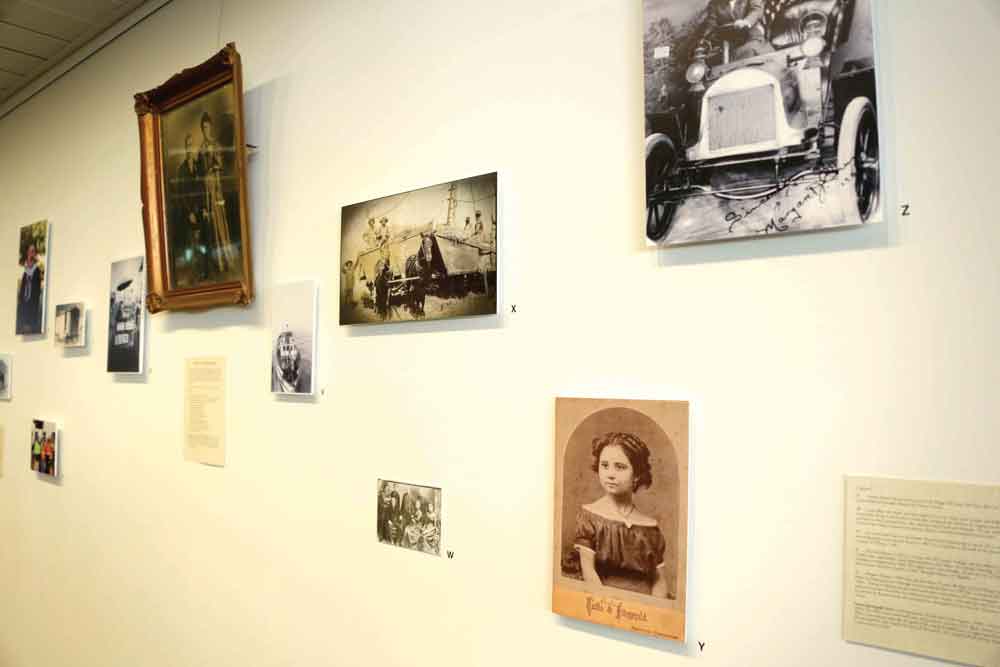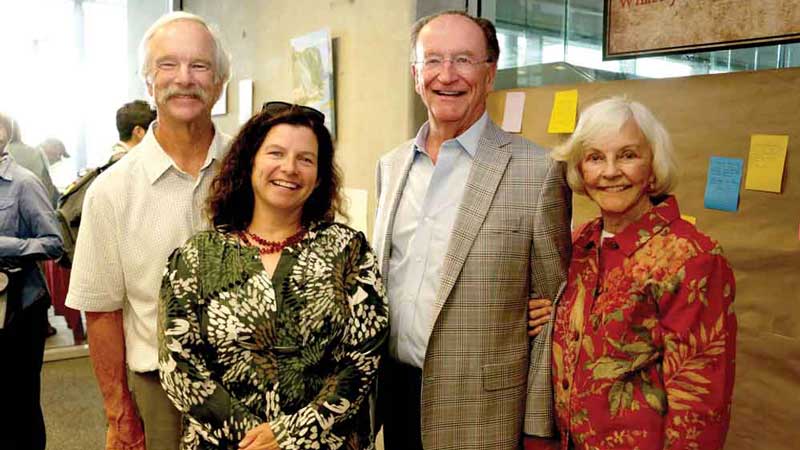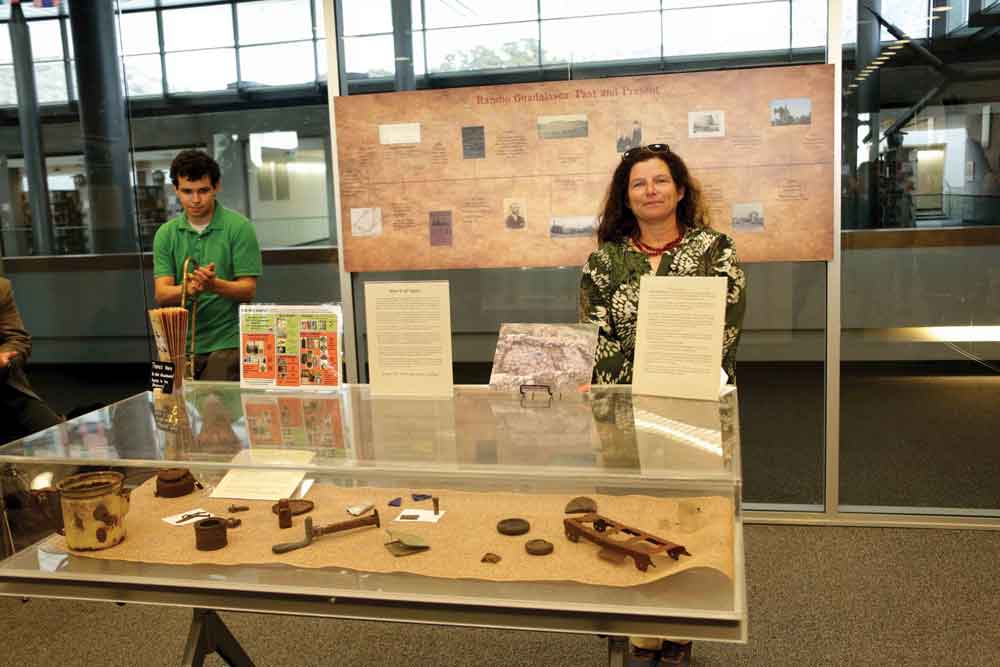
Historical photographs of Rancho Guadalasca at the Broome Library exhibit.
By Kim Lamb GregoryIt all started one day in 2013 when Professor of Anthropology Colleen Delaney and her students were surveying the hillsides around CSUCI. The Springs Fire had stripped away a lot of foliage, so it was an opportunity for Delaney and her students to explore this land and deepen our understanding of its history.
The mysterious structure they unearthed launched Delaney on an odyssey that resulted in a book, an exhibit, several lectures, and a place in the 150th anniversary celebration of Ventura County.
Delaney and her students were accustomed to finding remnants of Camarillo State Hospital, which occupied the area from 1933 to 1997. On this particular excursion in 2013, the group unearthed part of a structure that intrigued all of them.
“We found an unusual structure that was made out of volcanic rock and concrete,” Delaney said. “Based on some faculty/student research we conducted, it looked like a 1950s work building that didn’t match any of the hospital buildings.”
 From left to right: John Broome Jr., Professor of Anthropology Colleen Delaney,
From left to right: John Broome Jr., Professor of Anthropology Colleen Delaney,
CSUCI President Emeritus Richard Rush, and Linda Dullam
That day’s find launched Delaney on the trail of the mysterious structure, which she learned was part of a historic 30,000-acre ranch called Rancho Guadalasca.
“I went on sabbatical in 2019 and I started looking for property records and old maps and aerial photographs,” Delaney said. “I wanted to figure out who lived there, who owned it, and what it was used for.”
She then wrote a book released in Spring of 2023 entitled Rancho Guadalasca: Last Ranch of California’s Central Coast, by The History Press.
Delaney researched the first inhabitants of the area in consultation with the Barbareño/Ventureño Band of Mission Indians and learned that the territory later known as Guadalasca was important to the Ventureño Chumash.
 Professor of Anthropology Colleen Delaney speaks about the exhibit based on her book about Rancho Guadalasca.
Professor of Anthropology Colleen Delaney speaks about the exhibit based on her book about Rancho Guadalasca.
One village that was located in this area, simo’mo, has the oldest evidence of plank canoes, called tomols. The village of sat’wiwa was located near the mountain of that name (also called Round Mountain) that is located on the CSUCI campus. As a mountain shrine, sat’wiwa remains sacred to the Chumash.
After the Spaniards came and the Chumash were removed to missions, the land at Rancho Guadalasca sat untended until a shrewd woman named Ysabel Yorba was awarded the land as part of a Mexican land grant in 1836.
“She was illiterate because they didn’t educate girls back then,” Delaney said. “She was married at 15 and had a baby girl the day after her 17th birthday. Within the month, her husband was transferred to the Santa Barbara Presidio.” Yorba's husband served as acting comandante of the Santa Barbara Presidio and was elected to the Mexican Congress in 1828, but died in 1830 when Yorba was 41.
After her husband died, Yorba petitioned the Mexican government for the land and successfully ran it for 35 years, until she died at age 82.
 Professor of Anthropology Colleen Delaney wrote a book released in Spring of 2023 entitled Rancho Guadalasca: Last Ranch of California’s Central Coast, by The History Press.
Professor of Anthropology Colleen Delaney wrote a book released in Spring of 2023 entitled Rancho Guadalasca: Last Ranch of California’s Central Coast, by The History Press.
The ranch property, which lay at the western end of the Santa Monica Mountains along the eastern Oxnard Plain, was then occupied by farmers and ranchers, including Basque sheepherders, and Japanese fishermen who ran a sport fishing business.
“That fishing business was very egalitarian,” Delaney said. “Painters, electricians and waitresses rubbed elbows with the likes of actor Lionel Barrymore and studio executives.”
In 1906, Joseph F. Lewis bought an 8,200 acre parcel of Rancho Guadalasca. Then, in 1932, the State of California purchased 1,760 acres of the Lewis Ranch and established Camarillo State Hospital. The property was then conveyed to the CSU in 1998 and ultimately became the CSUCI campus in 2002.
Since the book on Rancho Guadalasca was released, Delaney has done lectures and book signings around Ventura, Santa Barbara, and Los Angeles counties, sharing items from an exhibit with various artifacts previously displayed in the John Spoor Broome Library.
In recognition of Ysabel Yorba, Delaney will kick off Women’s History Month on March 3, 2024, with a presentation at the Museum of Ventura County.
Individuals interesting in purchasing her book may contact Professor Delaney at colleen.delaney@csuci.edu or visit: https://square.link/u/8XIh9f1o
